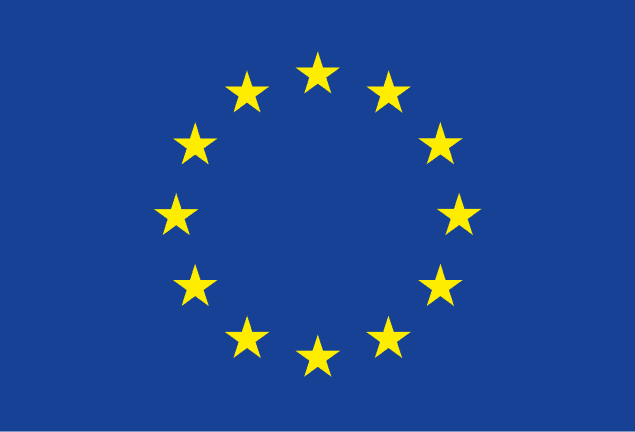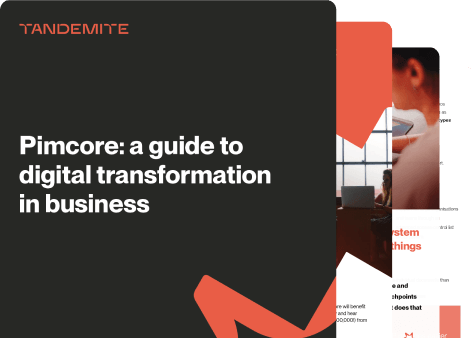Following eCommerce trends is one of the most important tasks for every eCommerce store owner. You need to meet consumer needs. In the realm of eCommerce businesses, it is crucial to recognize that success is not solely reliant on advanced technological solutions or an appealing visual design of the platform. What matters most is the growing satisfaction of your customers. You can read below about how to meet their expectations in 2023.
From this article, you will learn:
- What eCommerce trends do you need to know in 2023?
- What can you do to gain customer satisfaction?
- How to choose an effective platform and take care of information architecture?
- How to boost your eCommerce business effectively?
- How to leverage deferred payments, social commerce, and artificial intelligence?
eCommerce trends in 2023 - what do your customers expect?
Nowadays, it's hard to imagine someone who has never tried online shopping. Consumers, accustomed to the convenience of eCommerce, expect that transactions will be fast and enjoyable, with any obstacles swiftly eliminated. eCommerce websites should provide excellent customer service and outpace brick-and-mortar stores technologically.
User experience, or UX, is a concept that remains highly relevant. How consumers interact with the eCommerce sites is incredibly important. It's hard to deny that without satisfied customers, no online business stands a chance. To ensure that customers don't abandon their purchases during online shopping on your website, you must continually improve your eCommerce.
The year 2023 presents many challenges for the eCommerce industry. Therefore, we have prepared a few tips below to help you better understand your customers and tailor your actions to their actual needs. Personalized shopping experiences are the future.
Artificial Intelligence in eCommerce
It's impossible to discuss modern eCommerce trends for 2023 without mentioning artificial intelligence (AI). The eCommerce industry can benefit from AI in several ways. Some of them include:
- Personalization: By tracking individual stages of the customer journey and analysing customer data, behaviour, and preferences, AI can provide personalized shopping experiences, increasing the chances of boosting sales.
- Customer support: AI can be used to provide quick and effective responses to customer inquiries through chatbots. Your team can focus on more complex questions, improving customer service for your online sales.
- Process automation: Thanks to artificial intelligence, you can automate various tasks such as order processing, customer data analysis, and inventory management, leading to greater operational efficiency.
- Marketing optimization: AI enables better customer segmentation, personalized marketing campaigns, and optimized advertising strategies, resulting in improved marketing outcomes and increased conversion rates. Let's not forget about social media. ChatGPT can really support you in writing engaging posts for your eCommerce brand.
Artificial intelligence already offers many opportunities for optimization and streamlining eCommerce processes, and there will be even more in the future! It's worth leveraging its potential. And if you're wondering whether AI is support or competition for developers, have a look at our LinkedIn and the article "AI and developers: Allies or competition?"
Augmented Reality

Augmented Reality (AR) can be utilized by online retailers in many ways to enhance customer engagement and improve customer experience. Here are a few ways in which AR can be used for better online shopping experiences:
- Virtual Try-On: With AR technology, your customers can virtually try on products such as clothing, eyewear, or jewelry. They can see how a particular product looks on them without the need to physically visit brick-and-mortar stores. It's a game-changer for many consumers, especially introverts!
- Product Visualization: AR allows customers to visualize products in their real-world environment. For example, they can see how a specific piece of furniture would look in their living room or how a certain decor item would fit with their interior design. That's something that eCommerce businesses have been missing until now.
- Interactive User Manuals: AR can be used to provide interactive user manuals for products. Customers can scan a product label or QR code and instantly receive animated instructions for assembly, maintenance, or operation.
- Enhanced Shopping Experiences: AR can create interactive and engaging online shopping experiences, such as virtual product presentations, brand history visualizations, or brand-related games and contests.
- Store and Promotion Localization: AR can assist customers in finding stores, product locations, or current promotions in their vicinity. They can use a mobile application that provides real-time information about available offers.
Voice shopping
Voice shopping is the process of making purchases using voice commands through voice-enabled devices such as smart speakers or virtual assistants. It allows users to interact with the device using natural language and verbally request products or services they wish to buy.
Voice search relies on voice recognition technology and artificial intelligence to understand and process user commands, search for relevant products, and complete the purchase.
It offers convenience and a hands-free online shopping experience, enabling users to place orders, reorder items, check product information, and track deliveries using only their voice. Voice shopping is a growing trend in eCommerce sales, providing a new way for consumers to shop and interact with brands.
Social Commerce
Boost your sales through social media! This means selling products and services directly on social media platforms like Facebook, Instagram, Pinterest, or Twitter. Social commerce leverages the power of influencers, community recommendations, customer reviews, and social interactions to generate sales.
To effectively utilize social commerce, you have several effective strategies to choose from:
- Create a Professional Social Media Profile: Establish and optimize your social media profiles to represent your brand in an attractive way, provide easy access to products, and encourage customer interaction.
- Share Valuable Content: Publish content that is interesting, engaging, and valuable to your community. You can share tips, inspirations, product reviews, promotions, etc. This helps build customer engagement and increases the chances of making a sale.
- Utilize Influencer Marketing: Collaborate with influencers who have a large following on their social media platforms and are relevant to your industry. Ask them to promote your products on their social media profiles, which can contribute to brand awareness and generate sales.
- Facilitate Purchases: Provide your customers with easy and convenient ways to make purchases on social media platforms. You can utilize features like "Buy Now" or "Shop Now," which redirect customers directly to your sales platforms.
- Encourage Reviews and Recommendations: Encourage customers to leave reviews for purchased products on your social media profiles and share them on their own profiles. Positive recommendations can attract new customers and build trust in your brand.
Remember that effective utilization of social commerce requires activity, engagement, and building relationships with customers on social media platforms. Be present, listen to customer feedback, and respond to their needs to build a strong community and facilitate their purchasing decisions.
Sustainable Development Policy
(Sustainable Development Policy) refers to an approach where companies strive for a balance between business goals and social responsibility and environmental protection. The focus is on implementing practices and initiatives that minimize the negative impact of business activities on the environment, society, and the economy.
Some key areas to consider in sustainable development are responsible supply chains, sustainable packaging, energy efficiency, waste reduction, and social responsibility.
Responsive eCommerce for mobile shopping

Online shoppers can be divided into two main categories:
- Desktop Lovers: These are users who browse websites using desktop versions.
- Mobile Shopping Fans: These are users who prefer mobile screens for their online activities.
If you want to generate sales efficiently, your store should display properly on both desktop and mobile devices. Mobile shopping is gaining popularity year by year, and neglecting this channel can make significant eCommerce sales growth nearly impossible.
Responsive Web Design (RWD) is a reliable technique for designing websites in a way that automatically adjusts the layout to fit the user's browser window. This ensures that users see the same content and experience regardless of whether they are accessing the site from a computer or a mobile device.
It's worth noting that responsive eCommerce stores have a higher chance of ranking well in search engines. This is because search engine algorithms pay particular attention to whether an eCommerce website displays correctly in various circumstances.
Alex Valencia, the author of an article on the benefits of RWD for SEO, highlights that one organization that places special emphasis on website responsiveness is Google:
"Since more users are searching on mobile devices than ever before, it's increasingly important for sites to be easy to render on any device."
Algorithm developers are increasingly favouring a Mobile-First approach, where positive user experiences on mobile devices are given priority. Therefore, it's essential to ensure that your eCommerce website is adequately presented even on smaller screens.
Seamless and comfortable payments
According to a study conducted by PayPal eCommerce Index, as many as 97% of consumers in Europe and Israel shop online. Analysing their shopping behaviour is the path to creating a better eCommerce experience.
The average European checks out in online stores 3.7 times a week. The Netherlands has the most frequent shoppers: nearly 80 percent shop at least weekly with over 4 purchases per week.
These figures indicate a significant portion of European households' budgets are allocated to online shopping nowadays. Especially in the Netherlands. It's no wonder that consumers focus on a convenient online shopping process that saves them the hassle of visiting physical stores, among other things. A crucial part of this process is the payment stage.
To ensure customer confidence and security, offer them the option to use popular payment gateways. By doing so, you will gain their trust, which is likely to result in positive consumer experiences and more successful transactions in your eCommerce business.
Pay-Over-Time option
In 2023, deferred payments are becoming the norm. It is a form of settlement where the customer can make a purchase or transaction immediately, while the payment is made at a later date.
In Europe, there are several examples of services offering deferred payments, such as:
- Afterpay: Afterpay, founded in 2015 and headquartered in Melbourne, Australia, is a prominent player in the "buy now, pay later" space. With a massive customer base of 8.3 million worldwide and 6,500 merchants, the company has achieved significant success amidst fierce competition.
- Klarna: It also offers an application. The application is not required for payments but provides additional features such as managing purchases, browsing discounts, contacting support, and personalizing the profile.
- ViaBill: Headquartered in Copenhagen, Denmark, and established in 2009, provides customers with convenient interest-free monthly payments. The company focuses on partnering with small businesses and integrating their platform into the checkout process to enhance conversions, revenue, and the overall shopping experience. ViaBill's dashboard helps users track and manage their finances and purchases, ensuring transparent payment tracking. As a strong European alternative to other similar apps, ViaBill stands out.
More old-fashion solutions
It's important to remember that not every user feels comfortable providing any data online. The option of cash on delivery can convince those individuals who still prefer traditional solutions. This is also a crucial factor for new customers who decide to explore your eCommerce platform.
When creating the payment section in your eCommerce sites, remember to provide customers with choices. If multiple options are available, there's a chance that one of them will be the most convenient for a particular consumer.
The requirement to register on eCommerce often acts as a barrier to completing a purchase. Not everyone is willing to provide their personal information, especially for occasional purchases. By offering the option to complete transactions without logging in, you increase the potential number of satisfied customers.
Page loading speed
When developing your eCommerce platform, don't forget about the importance of fast page loading for consumers. If something takes too long to load, frustrated users may quickly abandon their purchase or look for an alternative platform where they can comfortably make their purchase.
WCAG (Web Content Accessibility Guidelines) is a set of guidelines that help create web content with high accessibility. By implementing these guidelines, your users will be able to successfully navigate and use your store, regardless of the limitations they may have.
In the 21st century, when artificial intelligence has advanced enough to replace humans in some tasks, high website accessibility should be the norm. However, there are still websites that people with disabilities cannot access, even if the content posted there is of interest to them.
Accessibility issues also apply to the design of your eCommerce. It's important to ensure that users facing limitations can adjust the settings to make it easier for them to navigate the website. Examples of such solutions include font size regulations, the ability to adjust contrast appropriately, and providing special captions for graphics that can be easily read by screen readers for the visually impaired.
When designing your store, remember that not only its appearance matters but also its functionality and usability, which make users enjoy their experience on the platform.
Appearance and Information Architecture
Every website should be designed to provide the most convenient user experience possible. In such cases, the concept of information architecture comes into play, which refers to the way data is organized on a website to help users quickly navigate and find what they're looking for.
While shopping online, the most significant elements are navigation, filters, a search bar, and the shopping cart. If users can easily locate these elements right away, they can intuitively make purchases without having to search for desired items.
An attractive website design is important, but it's only effective when it's accompanied by usability. A carefully chosen colour palette, appropriately matched fonts, and thoughtfully arranged elements are the recipe for a successful online business.
Order tracking, omnichannel, and reviews

For online store customers, the ability to track their orders is important. When consumers know exactly what's happening with their package at every stage, they feel more at ease. With timely information, they can plan when to pick up their order, for example.
Order tracking can be done through various channels, such as applications, email notifications, or SMS messages, where users receive direct updates when their package arrives at the designated location.
Omnichannel, also known as multichannel selling, is currently gaining popularity in eCommerce. It refers to using different channels to complete the same transaction. This process blurs the boundaries between online and offline sales. Customers can, for example:
- Order a product online and pick it up at a physical store, avoiding shipping fees.
- Physically check a product in-store but place the order online.
- Return an online order at a designated point of service.
One of the platforms offering omnichannel services is the reliable Shopware, which can help you design an online store that provides high-quality services to your users, regardless of their preferred sales channel.
Reviews from satisfied customers of your online store serve as proof that you're successfully developing your business and adapting it to diverse needs. By including a few valuable testimonials on your website, you can encourage potential new customers to make a purchase.
Remember that credible customer reviews demonstrate that your store was built with real people in mind and can meet their expectations.
Summary
Understanding eCommerce trends is just one aspect of creating an attractive website for online shoppers. The most important factor in this process is adapting to the real needs of customers, without which such services would not be able to thrive. Creating personalized shopping experiences thanks to new technologies is almost a must.
We hope that these top eCommerce trends and tips in this article will help you grow dynamically in the market, not only by gaining more satisfied customers but also by outperforming the competition in various aspects. Make use of augmented reality, add multiple sales channels, and leverage new technologies to your advantage.
If you feel like your eCommerce business needs a refreshment, let's talk! Together, we'll find the best solutions (including top eCommerce trends). Stay ahead!







